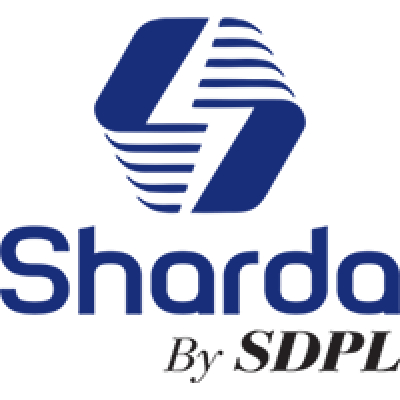If you want a smoother and quieter ride, you want to recognise the noise assets of tyres and their impact on avenue noise. With the right tyre layout, substances, and technologies, you could reduce tyre noise substantially. In this submission, we’re going to explore distinct tyre designs, special materials used in construction, variables including air pressure and wheel length that impact tyre noise levels, as well as sound insulation strategies and technologies used to lessen tyre noise.
Tyre Design:
The layout of a Dunlop Tyres Southampton affects its acoustic performance. Tread pattern, number and depth of tread grooves, rubber compound, and stiffness all have an impact on the extent of avenue noise produced by using tyres. Asymmetrical designs with deep circumferential grooves provide a higher grip on poorly paved roads but generally tend to produce greater noise than directional or symmetrical designs. Furthermore, softer rubbers absorb more vibration, resulting in less noise.
Special Materials and Techniques:
Special materials such as rubber-like compounds, silica, and nanomaterials are utilised in tyre production to improve grip, put-on resistance, rolling resistance, and noise reduction.
In addition, soundproofing materials, together with foam inserts and dampening layers, may be used to reduce avenue noise. These materials absorb the power generated by tyre vibrations.
Additionally, acoustic foam is used to soak up higher-frequency sounds produced in the interior of a vehicle with the aid of engine noise and air turbulence.
Variables That Influence Tyre Noise:
Air stress impacts the quantity of noise produced via tyres, in addition to the tyre’s touch with the road surface. As air stress increases, a tyre is more likely to make contact with irregularities on the pavement, inflicting more noise. Increasing wheel size will additionally increase street noise ranges, considering larger wheels roll over more choppy surfaces. Finally, automobile speed has an impact on the generated sound waves and their propagation.
Active Noise Cancellation Systems:
Modern technology, including lively noise cancellation structures, is becoming increasingly famous in the automobile industry for decreasing tyre noise. This era uses microphones to stumble on sound waves, which then produce a 2D wave that is one hundred eighty stages out of phase with the first wave, accordingly cancelling out the authentic waveform.
The impact of variables, which include air strain, wheel size, tread pattern, and car velocity, on tyre noise.
The air pressure of a tyre influences the quantity of noise produced by it in addition to its contact with the road floor. As air strain increases, the tyre is more likely to make contact with irregularities on the pavement, causing it to make more noise. Increasing wheel size additionally has an impact on avenue noise ranges, considering large wheels roll over uneven surfaces and create more sound waves. Additionally, car velocity has an impact on the generated sound waves and their propagation.
The tread sample of a tyre influences its overall performance in terms of noise discount. Tread patterns with deeper grooves are better at decreasing noise due to the fact that they invent more floor locations for absorbing vibrations and minimising sound electricity emitted. Furthermore, wider tread styles also help lessen
Sound insulation strategies consisting of soundproofing substances, dampening layers, and foam inserts:
Soundproofing substances are frequently used in combination with different techniques for noise reduction. Materials like rubber, PVC, and carpet can be added to a car’s interior to provide extra sound insulation. Dampening layers are also powerful in reducing noise transmission.
These encompass a thin layer of cloth that’s located between two surfaces if you want to reduce the sound waves travelling via them. Foam inserts are every other famous alternative for noise reduction given that they provide an additional barrier between the outer surface and the interior area, blocking out any unwanted sounds.
Effectiveness of current technologies, including energetic noise cancellation :
Active noise cancellation systems are an effective technique for decreasing tyre noise. They use advanced algorithms to become aware of and cancel out undesirable sound waves produced via the vehicle’s tyres, resulting in a quieter ride. These systems are particularly useful for cars travelling at higher speeds, as they can provide a further layer of protection in opposition to excessive levels of road noise. Additionally, lively noise cancellation systems are also becoming increasingly popular for imparting extra-cushy surroundings within the car.
Benefits of Using Tyre Noise Reduction Techniques :
Tyre noise reduction techniques can provide a number of advantages in terms of protection, performance, consolation, and convenience. This can help drivers preserve their concentration and awareness while on the street. In addition, decreasing tyre noise can also enhance gas performance and reduce wear and tear on the tyres themselves.
In terms of comfort, using Cheap Tyres Southampton noise reduction strategies can create a much quieter driving environment that is extra enjoyable and fun for passengers. Furthermore, motors geared up with this technology are regularly able to perform better in terms of acceleration, cornering, and braking.
Conclusion
Tyre noise is an essential aspect to take into account when designing and manufacturing motors. There are many unique strategies and technologies available for lowering tyre noise, which include tread sample layout, soundproofing materials, dampening layers, foam inserts, and energetic noise cancellation systems. Each of these techniques can be used to create a quieter and more calm environment using revel in. With the proper mixture of strategies, it’s far feasible to lessen tyre noise significantly and make any adventure tonnes more enjoyable.





